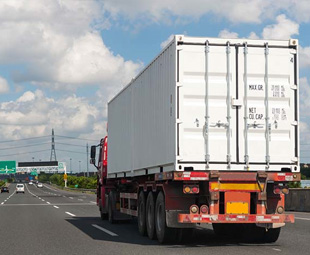Clutching at straws

As 2017 draws to a close, there is good reason for concern in the South African Development Community (SADC) regional road-transport industry, writes MIKE FITZMAURICE, CEO of Fesarta.
The recent and recurring obstructions by regulators, together with the looming mass of planned bureaucratic interventions, make it imperative for the industry to prepare for engagement at the highest possible levels.
For this reason, Fesarta is developing strategic plans to ensure that the voice of the industry is not muted or obscured by an imminent tide of regulatory activity that is often contradictory, uncoordinated and based on impracticalities in order to achieve the stated mantras of “liberalisation”, “harmonisation”, “enhancement of trade” and “regional integration”.
The various proposed interventions present a confused mixture of transport regulations and measures to monitor and control movement of goods.
This is taking place in a climate where taxes, charges and delays at borders account for at least 50 percent of the total transport cost on the north-south and other corridors. There is also no evidence of political will to facilitate attempts by the private sector attempts to increase efficiency and trade.
- The SADC Tripartite formally initiated the Tripartite Transport and Transit Facilitation Programme (TTTFP) in September 2017, with the overall objective “to facilitate the development of more competitive, integrated and liberalised regional road transport market in east and southern Africa”.
The programme is aimed at the quality of road-transport operations by harmonising regulations, instruments, systems and standards to be applied by member states.
It includes registration of transport operators, which is linked into the Integrated Transport Register and Information Platform System (TRIPS); harmonised vehicle dimensions; specifications and equipment; vehicle testing stations; training, testing and licensing of drivers; regulations for abnormal loads and dangerous goods; and overloading control with uniform management and control systems at weighbridges.
All of this is to be enacted under the Multilateral Cross Border Road Transport Agreement (MCBRTA) between all countries, which will repeal current bilateral agreements. The basic objective is to identify and register compliant operators, so as to remove the need for permits and eliminate obstructions at borders and on corridors.
In South Africa, the Cabinet meeting on May 24 approved the Road Freight Strategy for South Africa, which is well aligned with the TTTFP programme. It also included recommendations for several changes to South African regulations that are currently unworkable.
At the same time, however, the CBRTA is still proceeding with its competitive Operator Compliance Accreditation Scheme (OCAS), which has eclectic objectives: to enable road transport to play its role; to enhance efficient regulation of cross-border transport; response to regional TTTFP compliance by operators with traffic regulations; advancing liberalisation and self-regulation; migration to quality regulation and harmonisation; and improvement in trade and efficiency.
- The South African Revenue Service (SARS) has introduced mandatory Electronic Cargo Manifest Submissions at the Lebombo Border Post. From November 1, SARS will accept only electronic submissions of cargo manifests to its Manifest Processing System (MPR) at the Lebombo Border Post and at all other ports of entry in Mpumalanga.
- The Common Market for Eastern and Southern Africa (Comesa) secretariat has developed a single-window electronic initiative called Comesa Virtual Trade Facilitation System (CVTFS).
Its purpose is to: promote trade through facilitation of movement of data to stakeholders; increase connectivity in data sharing among various agencies; increase transparency, standardisation and predictability; and monitor transaction progress across multiple steps within the process chain.
The CVTFS started with real-time cargo tracking and was developed to address many challenges associated with the movement of international cargo (such as smuggling and diversion of cargo in transit, delays in clearance of cargo at the border posts and long cargo transit and release time).
- The African Union Commission has initiated the Design and Costing of North South Corridor (NSC) and Dar es Salaam Corridor (DC) as PIDA PAP Pilot Smart Corridors (PSCs) for implementation.
The characteristics of the Smart Corridor include vehicle tracking, electronic integrated information systems, processing, definition of procedures, as well as the appropriate corridor coordination and management for a Smart Corridor.
The consultants say that “appropriate corridor coordination and management for the corridors are either in place, or preparation for its establishment is at an advanced stage, and there is nothing further to be done on this matter except for the stakeholders to finalise what they have already decided to do in terms of strengthening or establishing the Corridor Management Institutions (CMI)”.
The transport industry in the SADC region would disagree.
- Zimbabwe Customs has introduced the system of applying electronic seals on all vehicles at its borders, defining routes and escorting convoys of vehicles that cannot be sealed. The resulting chaos has led to massive queues and delays at Zimbabwean borders.
This adds to the Fesarta total of 992 Non-Tariff Barriers (NTBs) recorded in past eight years, of which 62 are still unresolved. Of course, many of them were resolved by closing the discussions.
According to the Trade Law Centre (Tralac), the most prevalent NTBs hindering regional trade in the Tripartite Territory include customs procedures and administrative requirements, technical standards, government participation in trade and the lack of physical infrastructure. This is of particular importance to agricultural trade within the region.
Cumbersome documentation requirements, stringent standards and inefficient road and rail networks cause time delays and increase the cost of intra-regional trade. This has a direct and indirect impact on the quality and price of agricultural products available in the regional market.
- Fesarta and the International Road Transport Union (IRU) have a memorandum of understanding that includes evaluation of the potential for the International TIR system for handling interstate cargoes by all modes.
Fesarta will be working with the EU-SADC Trade Facilitation Programme. Lot 10: Trade, Standards and Private Sector, is a programme intended to address the many issues obstructing trade in SADC region.
The number and variations in these plans and programmes may be contrasted with the very effective improvements that are in operation in the Ease African Community (EAC) region.
These include Single Customs Territory, standardised road charges, reduced transit bond costs and massive improvement to border delays through efficient OSBP development.
The Fesarta team is contributing to these positive developments in EAC and, with the support of the SADC and COMESA-based road-transport associations and their members, will be defining the issues and increasing engagement with the authorities in 2018.
Published by
Focus on Transport
focusmagsa



